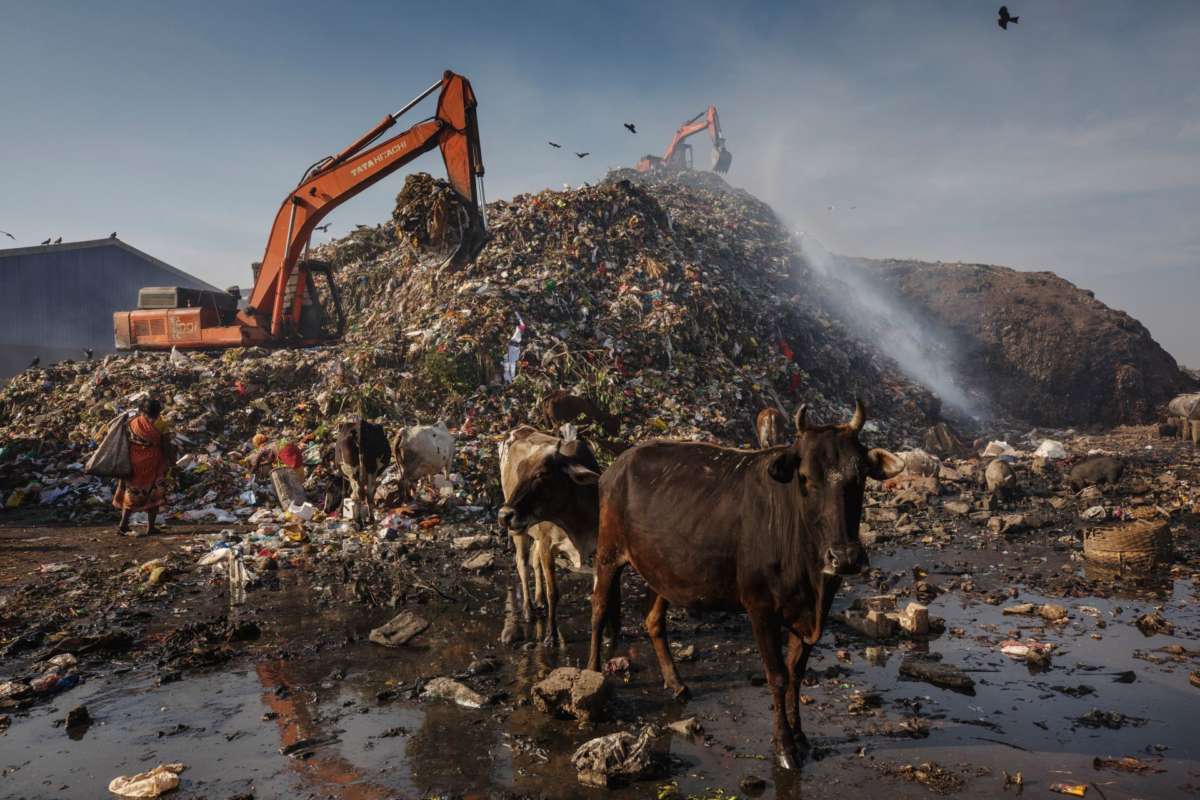Fresh U.S. government data spotlighting the rapid growth of atmospheric methane concentrations in recent years has scientists increasingly concerned that the human-caused climate crisis has triggered a vicious feedback loop, potentially resulting in unstoppable planetary warming.
Research published in January by the National Oceanic and Atmospheric Administration (NOAA) showed that atmospheric concentrations of methane — a greenhouse gas that’s 80 times more potent than carbon dioxide over a 20-year period — soared past 1,900 parts per billion in 2021, which ranked as the fourth-warmest year on record.
As Nature reported Tuesday, “The growth of methane emissions slowed around the turn of the millennium, but began a rapid and mysterious uptick around 2007.”
“The spike has caused many researchers to worry that global warming is creating a feedback mechanism that will cause ever more methane to be released, making it even harder to rein in rising temperatures,” the outlet noted. “Potential explanations [for the methane surge] range from the expanding exploitation of oil and natural gas and rising emissions from landfill to growing livestock herds and increasing activity by microbes in wetlands.”
Euan Nisbet, an Earth scientist at Royal Holloway, University of London, told Nature that “methane levels are growing dangerously fast” as powerful countries around the world refuse to end the extraction of coal, natural gas, and other sources of the pollutant.
“Is warming feeding the warming? It’s an incredibly important question,” said Nisbet. “As yet, no answer, but it very much looks that way.”
“Warming feeding the warming”: Methane concentrations in the atmosphere raced past 1,900 parts per billion last year, nearly triple preindustrial levels
I’ll just let this sit therehttps://t.co/h8SNausCc3 #climate pic.twitter.com/n6gtTnmoCN
— Assaad Razzouk (@AssaadRazzouk) February 8, 2022
Scientists have long feared that the continued burning of fossil fuels risks setting in motion a chain reaction whose consequences — particularly ever-more global warming — are irreversible.
While researchers are still working to discern the extent to which human activity is responsible for the alarming spike in atmospheric methane levels in recent years, scientists have previously warned against categorizing certain causes of methane emissions — such as thawing permafrost — as “natural,” given that they are typically a result of human-driven warming.
“Regardless of how this mystery plays out, humans are not off the hook,” Nature stressed Tuesday. “Based on their latest analysis of the isotopic trends, [NOAA scientist Xin Lan’s] team estimates that anthropogenic sources such as livestock, agricultural waste, landfill, and fossil-fuel extraction accounted for about 62% of total methane emissions since from 2007 to 2016.”
Here is the annualized methane graph, showing the amount of methane entering the atmosphere over the last 12 months. Once again, the amount of new methane broke the previous record, hitting 158.2 ppb over the last 12 months.
Very bad news for humanity and the planet. pic.twitter.com/v9VIH5FG2e
— Prof. Eliot Jacobson (@EliotJacobson) February 8, 2022
NOAA’s latest figures were released months after the Intergovernmental Panel on Climate Change (IPCC) warned in its 2021 landmark report that atmospheric methane levels are currently higher than at any point in the last 800,000 years.
Despite such a dire finding, global policymakers took few steps to substantively address methane emissions at the COP26 climate summit in November. While dozens of additional countries signed on to a pledge to reduce methane emissions by 30% from 2020 levels by the end of the decade, climate groups argued that “pledges are just words on a page without concrete action to make them real.”
Amid the COP26 talks, the Biden administration unveiled rules aimed at cutting U.S. methane emissions, but critics said they do not go nearly far enough. The U.S. is the second-largest emitter of methane in the world.
“For too long, we’ve known the damaging impacts of this potent heat-trapping pollutant, known that oil and gas operations continue to be a major source of it, and known that solutions to drive rapid reductions across the sector already exist — yet still, oil and gas operations continue to release untenably high and entirely preventable methane emissions,” Julie McNamara, deputy policy director of the Climate and Energy Program at the Union of Concerned Scientists, said in a statement at the time.
“Swiftly reducing methane emissions,” said McNamara, “will result in significant and much-needed near-term climate progress.”
Our most important fundraising appeal of the year
December is the most critical time of year for Truthout, because our nonprofit news is funded almost entirely by individual donations from readers like you. So before you navigate away, we ask that you take just a second to support Truthout with a tax-deductible donation.
This year is a little different. We are up against a far-reaching, wide-scale attack on press freedom coming from the Trump administration. 2025 was a year of frightening censorship, news industry corporate consolidation, and worsening financial conditions for progressive nonprofits across the board.
We can only resist Trump’s agenda by cultivating a strong base of support. The right-wing mediasphere is funded comfortably by billionaire owners and venture capitalist philanthropists. At Truthout, we have you.
We’ve set an ambitious target for our year-end campaign — a goal of $180,000 to keep up our fight against authoritarianism in 2026. Please take a meaningful action in this fight: make a one-time or monthly donation to Truthout before December 31. If you have the means, please dig deep.
